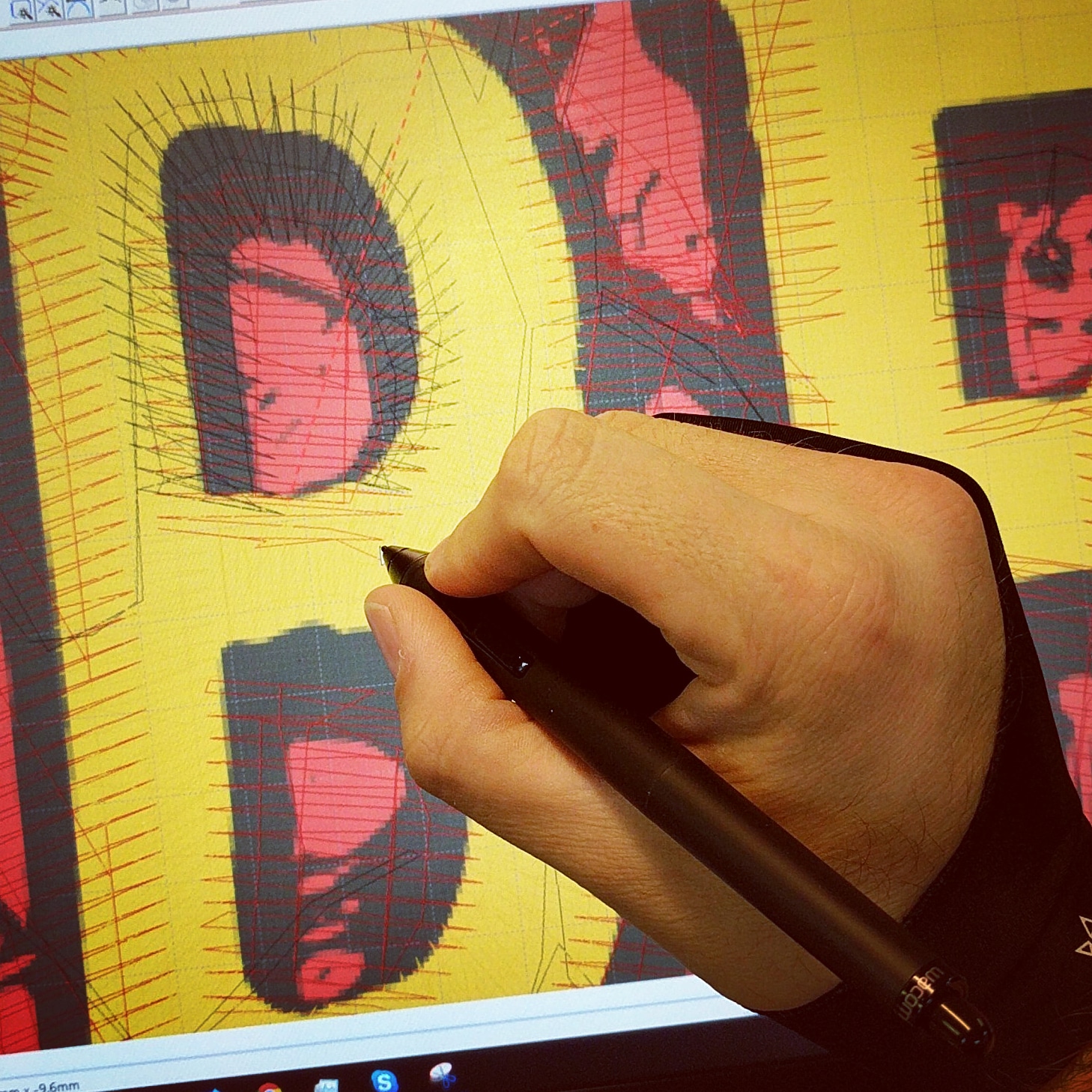Trusted Digitizing for Embroidery: Relied On by Specialists
Trusted Digitizing for Embroidery: Relied On by Specialists
Blog Article
Streamlining the Art of Embroidery Digitizing: Step-by-Step Overview
As innovation continues to advance, the digitization procedure has actually become extra obtainable, permitting fanatics to bring their complex designs to life with ease. In this overview, we will certainly unwind the intricacies of embroidery digitizing, breaking down each action systematically to simplify the process and encourage both novices and experienced embroiderers alike.
Comprehending Needlework Digitizing Software
Needlework digitizing software serves as an important device for transforming complex designs into electronic formats compatible with needlework machines, assisting in precise sewing and customization. This specific software program enables individuals to import various photo documents styles, such as JPG or PNG, and convert them right into needlework machine-readable styles like DST, EXP, or PES - Digitizing for Embroidery. By utilizing features like stitch editing and enhancing, rug choices, and string shade option, digitizing software application allows customers to control every aspect of the style process
Additionally, progressed needlework digitizing software program offers tools for producing intricate designs, changing stitch density, and integrating detailed information. Users can also preview the style prior to sewing it out, ensuring accuracy and lessening mistakes. Furthermore, several software programs provide automatic functions that help streamline the digitizing procedure, saving time and effort.
Comprehending the abilities of embroidery digitizing software application is necessary for accomplishing top notch lead to embroidery projects. By understanding this device, needlework lovers and professionals can unleash their creative thinking and bring detailed layouts to life with accuracy and effectiveness.

Choosing the Right Style Data
After acquainting on your own with the capabilities of embroidery digitizing software, the following crucial action in the procedure is selecting the best layout declare your job. Digitizing for Embroidery. When choosing a style declare needlework digitizing, it's necessary to think about the complexity of the design, the dimension of the last product, and the kind of fabric you will be dealing with
For intricate designs with fine details, a high-resolution image or vector data is recommended to ensure that the needlework maker can properly duplicate the layout. In addition, the size of the final product plays a considerable function in picking the appropriate style data. Bigger styles may call for greater resolution data to maintain clarity and sharpness.
Moreover, the kind of fabric you will certainly be embroidering on affects the selection of style documents. Different textiles may call for adjustments in the style file to make certain that the stitches are effectively straightened and the design appears as meant. By carefully choosing the best style file based on these aspects, you can establish yourself up for a successful embroidery digitizing process.
Digitizing Devices and Techniques
Utilizing specialized software application and accuracy strategies, digitizing tools are crucial in transforming detailed designs right into embroidery-ready documents. Embroidery digitizing software, such as Wilcom, Hatch, or Embrilliance, offers the essential platform to transform art work right into stitch information. These programs offer additional reading features like stitch modifying, padding options, and text tools to make sure the design equates seamlessly onto fabric.
One of the essential strategies in digitizing is creating a clear course for the needlework device to adhere to. This involves digitizing each component of the style with accuracy, identifying stitch types, densities, and instructions. By using tools like digitizing tablets or software-specific plugins, embroiderers can attain a high degree of precision in their digitized styles.
Additionally, grasping the art of underlay stitching is crucial for producing top quality needlework. Underlay stitching stabilizes the fabric and develops a structure for the design, ensuring that the final item is both aesthetically appealing and lasting. By understanding these digitizing tools and techniques, embroiderers can boost their craft and bring elaborate designs to life with accuracy and effectiveness.
Customizing Stitch Kinds and Directions
Having developed a foundation in digitizing devices and strategies, a critical facet in progressing embroidery craftsmanship lies in customizing stitch types and directions with accuracy and objective. The selection of stitch types can substantially influence the overall appearance and structure of the stitched here are the findings style. Satin stitches, understood for their smooth and glossy finish, work well for creating borders and text. On the various other hand, fill stitches are excellent for covering bigger locations efficiently. By purposefully incorporating these stitch kinds, embroiderers can accomplish depth and dimension in their designs.
Furthermore, the direction of stitches plays an important function in boosting the aesthetic allure of the final needlework. By trying out with different stitch angles and patterns, embroiderers can bring their designs to life with impressive information and ins and out.
Screening and Refining Your Digitized Layout
To ensure the accuracy and top quality of your digitized layout, thorough testing and improvement are vital action in the needlework digitizing procedure. When you have completed the digitization of your design, it is essential to evaluate it before waging the real embroidery. Evaluating enables you to recognize any kind of potential issues such as thread breaks, stitch density issues, or layout distortions that may impact the last result.

After screening, it is essential to fine-tune your digitized layout based Your Domain Name on the comments from the test sew-out. This may involve tweaking sew settings, adjusting densities, or making changes to the total layout to accomplish the wanted outcome. By iterating through screening and improvement, you can tweak your digitized style to perfection before moving on with the real needlework procedure.
Conclusion
Finally, mastering the art of needlework digitizing needs a detailed understanding of the software application, selecting the appropriate style file, making use of digitizing tools and strategies, personalizing stitch kinds and instructions, and testing and improving the digitized style. By following these actions, embroiderers can streamline the digitizing procedure and produce high-quality embroidered styles with precision and effectiveness.
Report this page